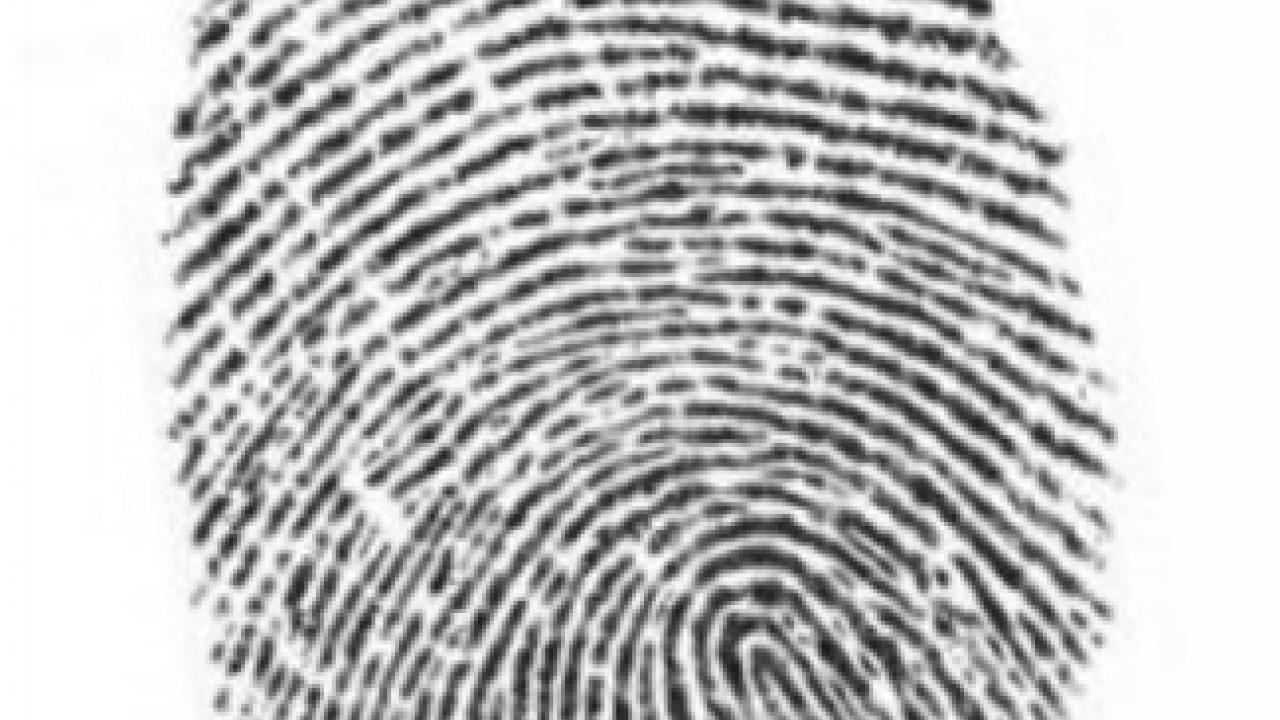Fingerprint matches -- key to fighting international terrorism and keeping criminals off the street -- are no longer foolproof, warns UC Davis law professor Edward Imwinkelried, one of the nation's leading experts on scientific evidence.
In an article in a recent edition of Judicature, he and co-author Mike Cherry, who designs identification systems, say the reliability of fingerprint identification has declined while the population of the world -- and its fingerprints -- has exploded.
"We can no longer naively assume the reliability of our current fingerprint standards," they write in the article titled "How We Can Improve the Reliability of Fingerprint Identification."
It states: "Given the stakes -- not only justice in a particular case but national security itself -- we must do better."
Imwinkelried is the university's Edward Barrett Jr. Professor of Law, and Cherry is vice chair of the digital technology committee of the National Association of Criminal Defense Lawyers.
Today's fingerprint matching process categorizes print ridges into general patterns (loops, arches and whorls) and subpatterns, and maps predetermined shapes and contours. A fingerprint is said to match another when the pattern, subpattern and some of the shapes and contours roughly correspond.
In the late 1800s, Sir Francis Galton developed the first system for classifying and identifying fingerprints. He is quoted as having said that the odds of two fingerprints being the same were 1 in 64 billion.
With a world population of more than 6 billion, and with most of those people having 10 prints, the number of fingerprints now exceeds Galton's estimated odds.
And, Imwinkelreid and Cherry point out, whereas fingerprint analysis formerly relied on index cards and analog photos, for comparison of up to 10 prints per person, the process is now computerized, using less precise digital images and prescreen matchers that sometimes use only a single index finger.
"If we're going to rely on the computer technology for the Watch List on terrorism, when we do background checks ... we've got to have some assurance the computer system is reliably accurate," said Imwinkelried, co-author of Scientific Evidence, which has been cited on several occasions by the U.S. Supreme Court.
Imwinkelried and Cherry call for high-powered computer analysis of existing fingerprint databases — data mining — to detect new patterns and develop new criteria for matching fingerprints. And they urge the return to the Henry Fingerprint Classification System, which uses all 10 fingers to classify an individual.
"If analyzed properly, fingerprints can be as accurate as DNA," the authors say.
In an earlier Judicature article, Imwinkelried and Cherry argued for greater skepticism of the use of computerized fingerprint analysis, especially for its reliance on digitized images of fingerprint patterns: "The bottom line is that digital images are simple, incomplete approximations of the images they attempt to capture."
The authors are calling on courts to take a more skeptical look at fingerprint testimony, recommending that computer systems check as many fingerprints as are available, and advising greater scrutiny of the matching criteria embedded in the programs that match fingerprints.
Media Resources
Dave Jones, Dateline, 530-752-6556, dljones@ucdavis.edu
